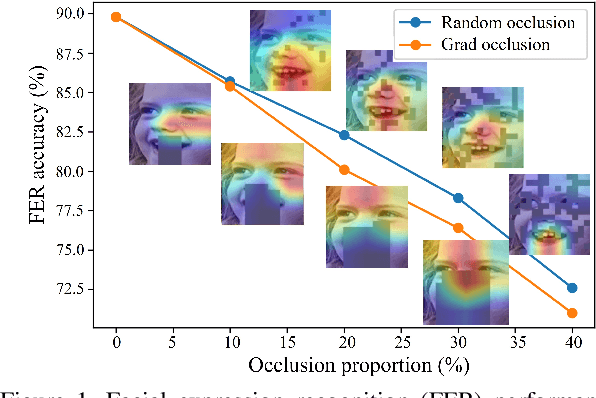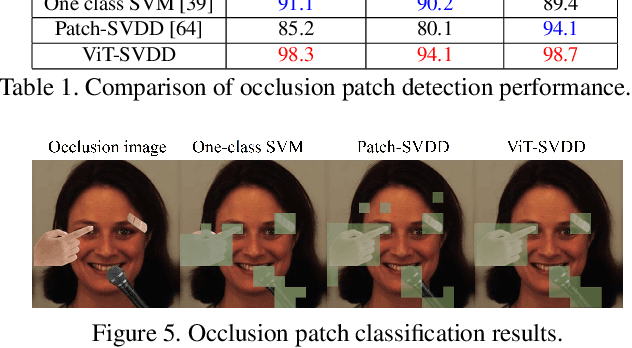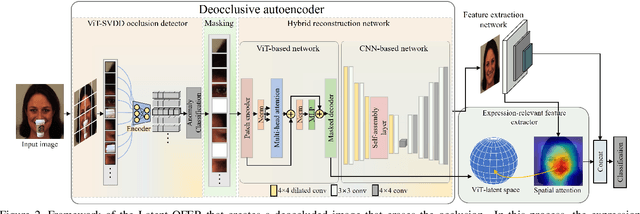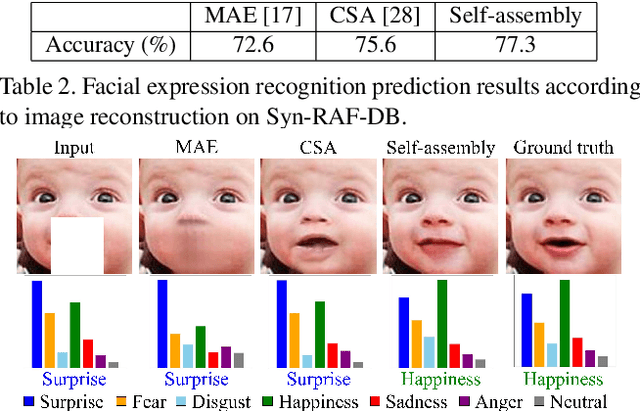Eungi Lee
Latent-OFER: Detect, Mask, and Reconstruct with Latent Vectors for Occluded Facial Expression Recognition
Jul 21, 2023



Abstract:Most research on facial expression recognition (FER) is conducted in highly controlled environments, but its performance is often unacceptable when applied to real-world situations. This is because when unexpected objects occlude the face, the FER network faces difficulties extracting facial features and accurately predicting facial expressions. Therefore, occluded FER (OFER) is a challenging problem. Previous studies on occlusion-aware FER have typically required fully annotated facial images for training. However, collecting facial images with various occlusions and expression annotations is time-consuming and expensive. Latent-OFER, the proposed method, can detect occlusions, restore occluded parts of the face as if they were unoccluded, and recognize them, improving FER accuracy. This approach involves three steps: First, the vision transformer (ViT)-based occlusion patch detector masks the occluded position by training only latent vectors from the unoccluded patches using the support vector data description algorithm. Second, the hybrid reconstruction network generates the masking position as a complete image using the ViT and convolutional neural network (CNN). Last, the expression-relevant latent vector extractor retrieves and uses expression-related information from all latent vectors by applying a CNN-based class activation map. This mechanism has a significant advantage in preventing performance degradation from occlusion by unseen objects. The experimental results on several databases demonstrate the superiority of the proposed method over state-of-the-art methods.
 Add to Chrome
Add to Chrome Add to Firefox
Add to Firefox Add to Edge
Add to Edge